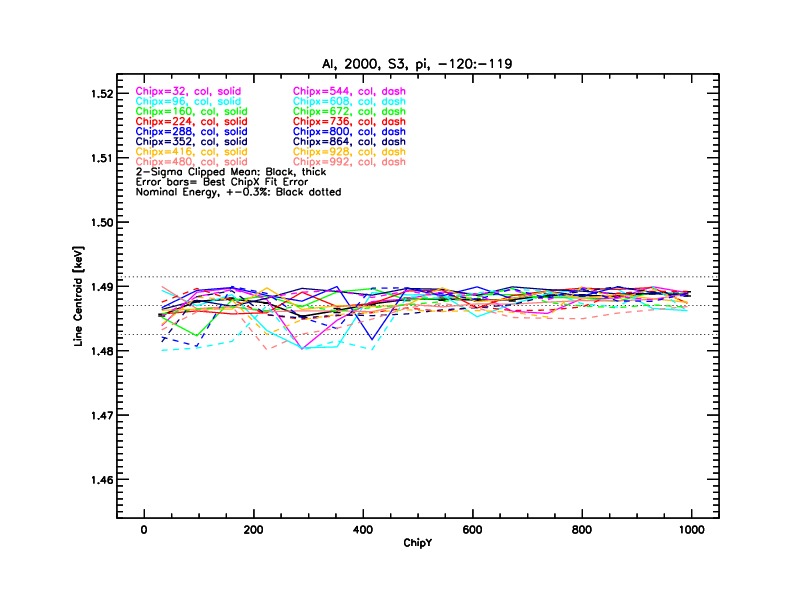
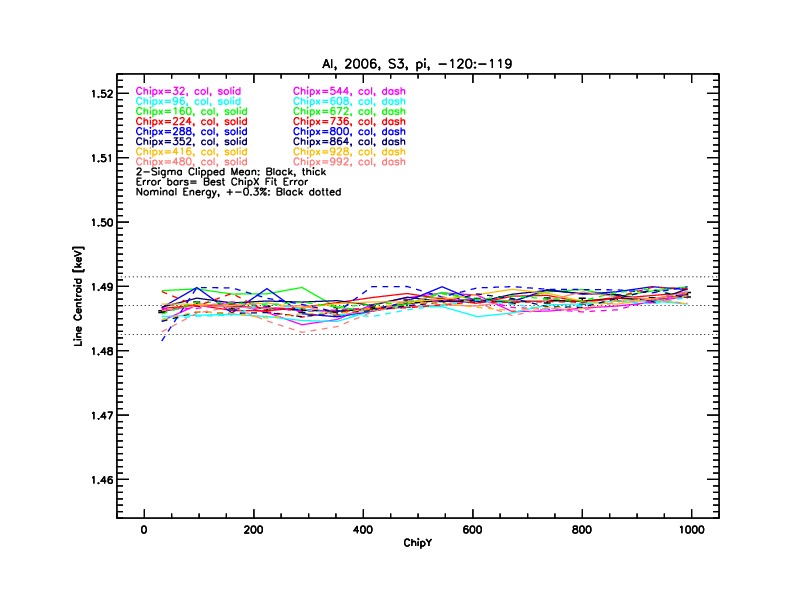
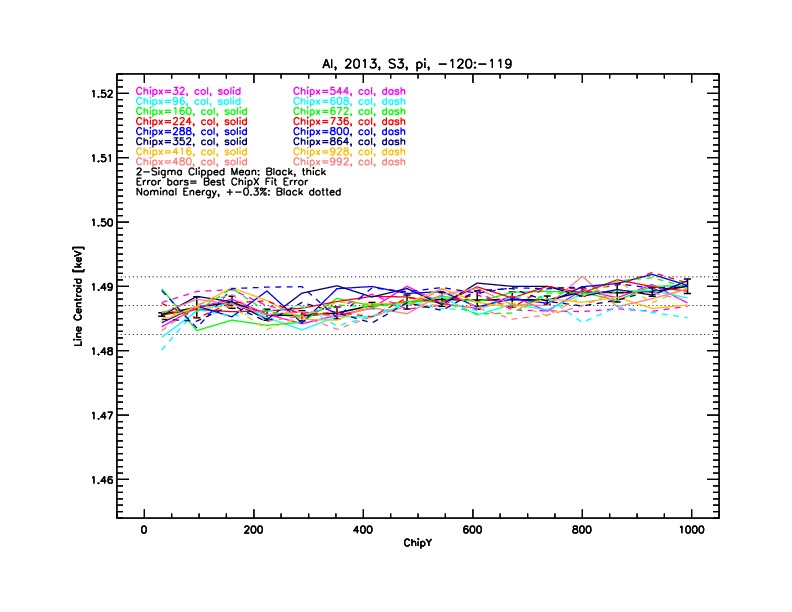

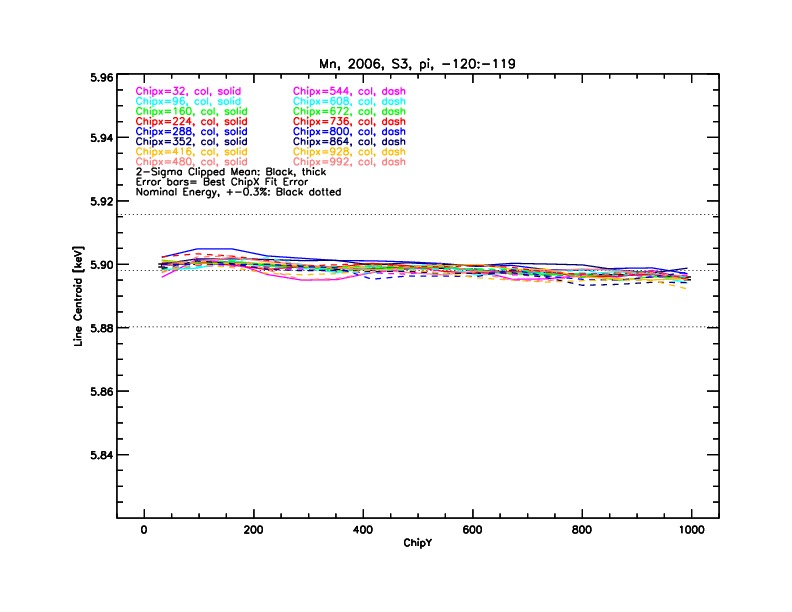
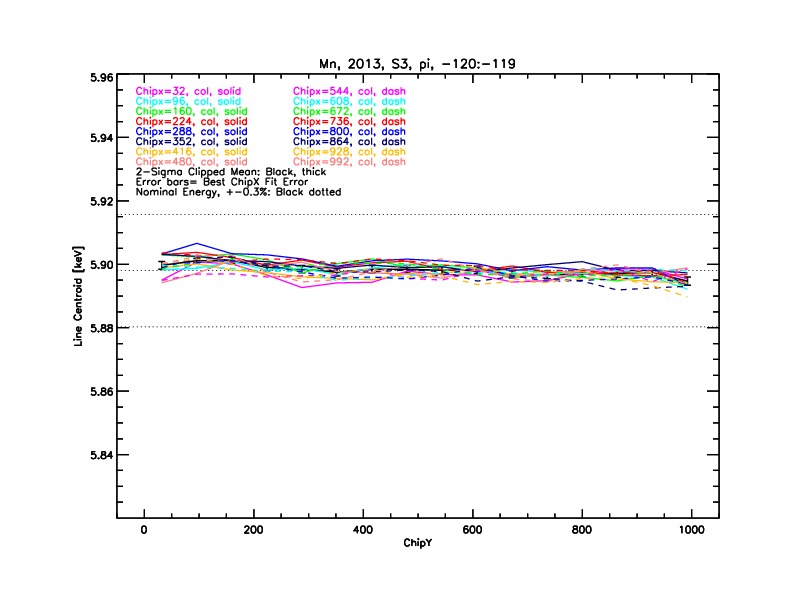
| Detector/Grating | Calibration Product | Average Uncertainty | Comments | Additional Information |
|---|---|---|---|---|
| ACIS | Dector Gain | 0.3% | The ACIS gain is calibrated with the ACIS external calibration
source (ECS), which consists of three 55Fe sources that
produce L-shell emission lines of Fe (0.71 keV)
and Mn (0.64 keV) and K-shell emission lines of Al (1.49 keV),
Ti (4.5 keV), and Mn (5.9 keV). ACIS is exposed to the ECS whenever it is
in the stowed position (i.e., when Chandra passes through the radiation
belts). Prior to Feb. 2016, updated ACIS gain tables were released
quarterly by co-adding three month of ECS data binned in 32 by 32 pixel regions.
The half-life of 55Fe is only 2.7 years, so it has
recently become necessary to co-add six months of ECS data to achieve sufficient
photon statistics to calibrate the gain. Since Feb. 2016, updated ACIS
gain tables are released semi-annually. Caveats:
|
Web Pages Papers/Memos Presentations/Plots |
| ACIS | Spectral Resolution | 30 eV | The quoted uncertainty in the spectral resolution of the ACIS detectors
was estimated by fitting a large sample of ECS data and corresponds to the
typical FWHM a user would obtain when fitting a Gaussian profile to an emission
line with zero intrinsic width (i.e., the current
version of the ACIS response matrix under estimates line broadening due
to the effects of CTI and variations in the focal plane temperature).
Caveats:
|
Web Pages Presentations/Plots |
| ACIS | Effective Area | 4% | The quoted uncertainty in the ACIS effective area corresponds to the
rms scatter in broad band fluxes for a sample of steady calibration sources (e.g.,
supernova remnants and clusters of galaxies) that have been
periodically observed with ACIS over the course of the mission and
thus represents the uncertainty in the relative effective area of the
ACIS detectors. The uncertainty in the absolute ACIS effective area is a more difficult
problem and can best be accessed through cross-calibration studies with
other X-ray missions such as those completed by the International Astronomical
Consortium for High Energy Astrophysics (IACHEC). Caveats:
|
Web Pages Papers/Memos
Presentations/Plots |
| HRC | Effective Area | 5% | The effective area of the HRC-I and HRC-S has been monitored throughout the
Chandra mission with periodic observations of steady sources (mostly the white
dwarf HZ43 and the supernova remnant G21.5-09). The rms scatter in the computed
fluxes of these two sources in HRC-I and HRC-S observations over the course of the
mission is approximately 5%. Caveats:
|
Web Pages Papers/Memos
Presentations/Plots |
| LETG | Absolute Wavelength Scale | 0.01 Å | The quoted uncertainty in absolute wavelength corresponds
to the rms scatter in the difference between lab wavelengths
and derived wavelengths for emission lines detected
in a LETG/HRC-S observation of Capella. The derived uncertainty
includes emission lines detected over the full
wavelength range covered by the HRC-S. Caveats:
|
Web Pages Papers/Memos Presentations/Plots |
| LETG | Effective Area | 8% | To maintain a stable LETG/HRC-S and LETG/ACIS-S effective area calibration,
the CXC calibration team carries out yearly LETG/HRC-S observations of
the white dwarf HZ43 and yearly LETG/ACIS-S observations of the isolated
neutron star RXJ 1856, both of which are stable, soft sources. Since all
bright, hard X-ray point sources are variable, a set of interleaved observations
are completed each year which cycle through all grating/detector combinations
while Chandra observes the same target. In most cases, the target has
been the blazar Mkn 421. These observations are then used to
cross-calibrate between the different grating/detector combinations.
Over a broad wavelength range, the uncertainty in the relative
effective areas of all grating/detector combinations is less than 8%. Due to the
steady decline in the gain and QE of the HRC-S during the
course of the Chandra mission, the high voltage of the HRC-S was increased
in Mar 2012 to restore the gain and QE to near launch values.
The loss in HRC-S gain and QE is corrected with the annual release of
updated QE and gain files. These updated files are used during
default CIAO processing. Caveats:
|
Web Pages Papers/Memos Presentations/Plots |
| HETG | Absolute Wavelength Scale | δ λ ⁄ λ = 10-5 | The absolute wavelength scale of HETG/ACIS-S grating data has been primarily calibrated with observations of the emission line source Capella. No time-dependent effects have been measured over the course of the mission. |
Web Pages Papers/Memos Presentations/Plots |
| HETG | Effective Area | 8% | All grating/detector effective areas, including the HETG/ACIS-S, are monitored with a set of yearly interleaved observations of the blazar Mkn 421. These observations are discussed in the LETG section above. Over a broad wavelength range, the uncertainty in the relative effective areas of all grating/detector combinations is less than 8%. In the left hand column is a link to a fluxed light curve for Mkn 421 during one of these interleaved observations. Even though Mkn 421 varies in brightness during the observation, the derived fluxes are in good agreement during the transitions between the different grating/detector combinations. |
Web Pages Papers/Memos
Presentations/Plots |
| Line Energy | 2000 | 2006 | 2013 | Al-Ka (1.49 keV) |  |
 |
 |
Mn-Ka (5.9 keV) |  |
 |
 |
|---|
| Line Energy | 2000 | 2006 | 2013 | Al-Ka (1.49 keV) |  |
 |
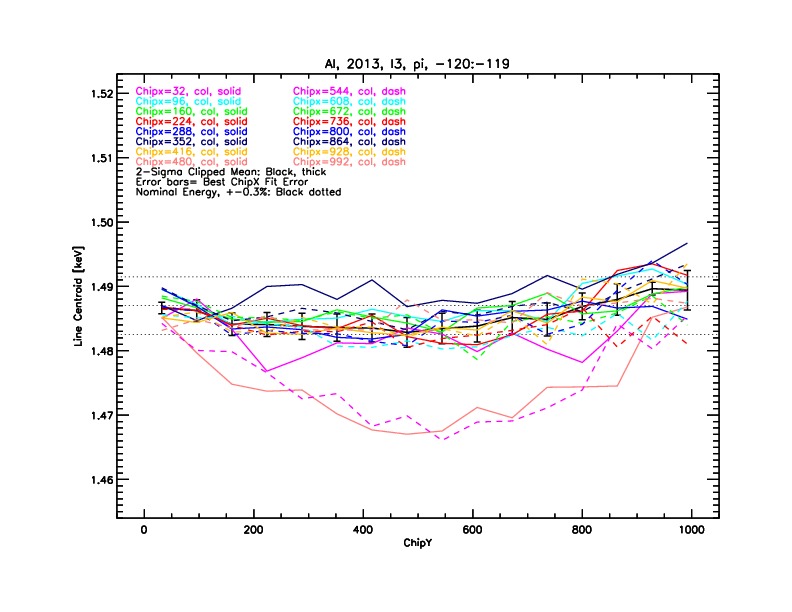 |
Mn-Ka (5.9 keV) |  |
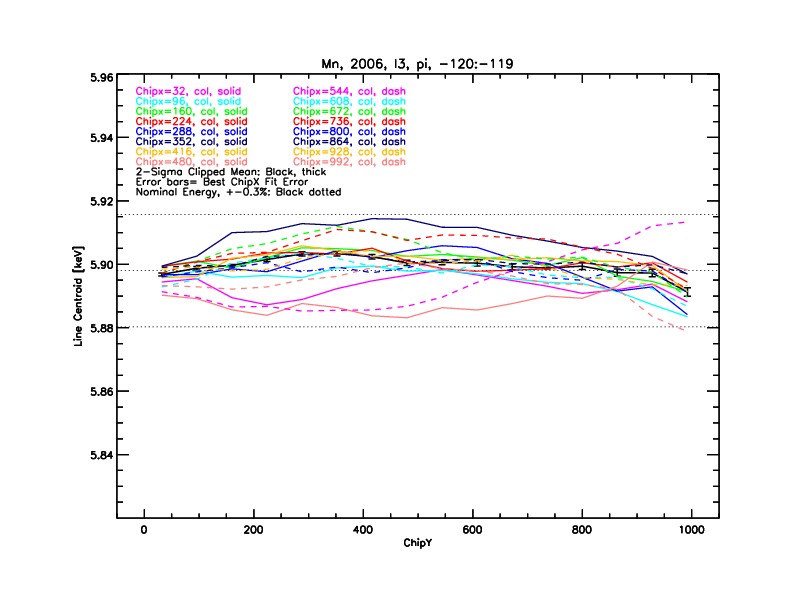 |
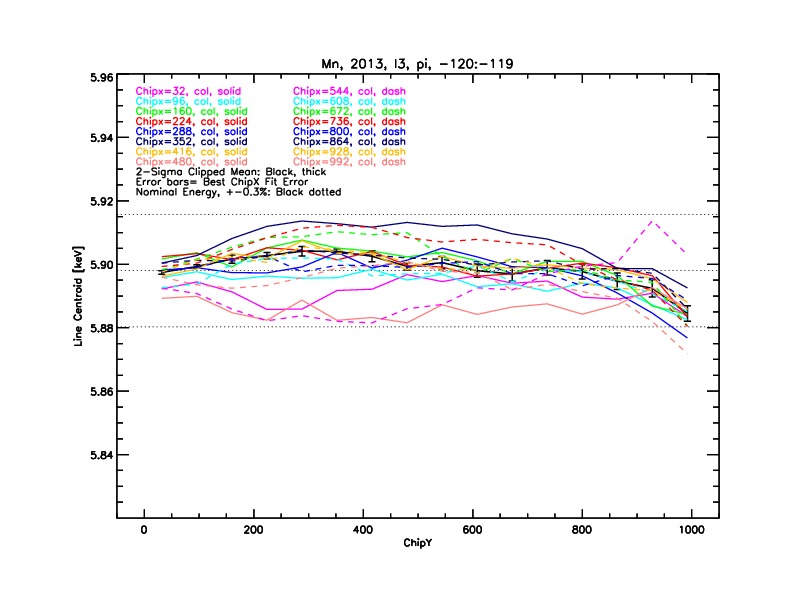 |
|---|
ACIS-S3 Gain vs. FP Temp (2013)
| Line Energy | -119.5 C | -117.5 C | -115.5 C | Al-Ka (1.49 keV) |  |
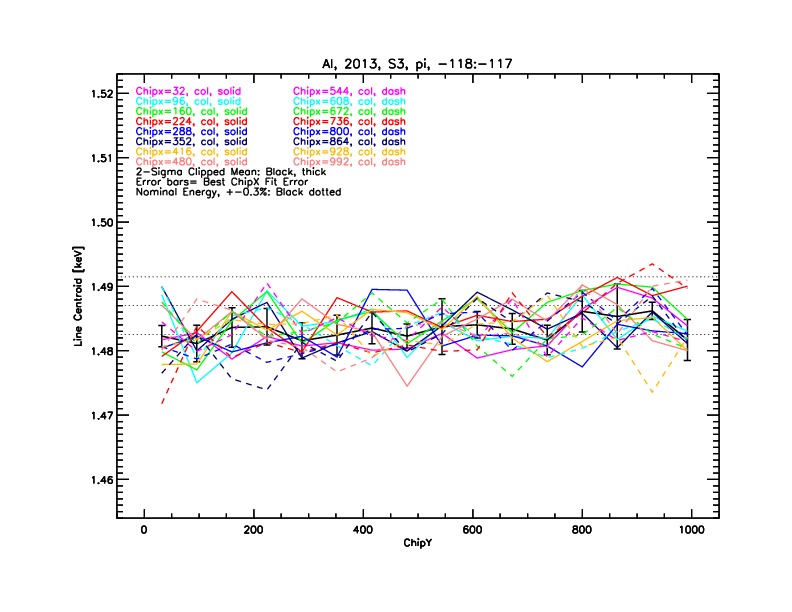 |
 |
Mn-Ka (5.9 keV) |  |
 |
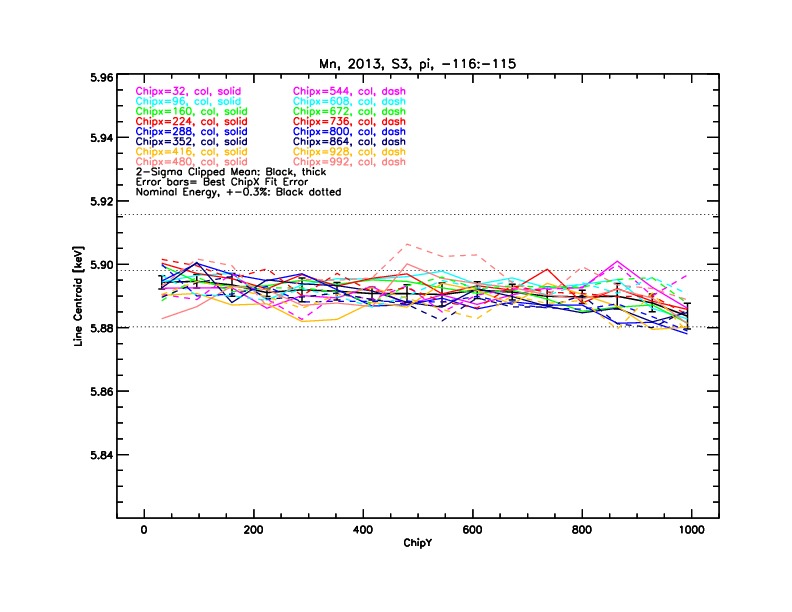 |
|---|
ACIS-I3 Gain vs. FP Temp (2013)
| Line Energy | -119.5 C | -117 C | -115 C | Al-Ka (1.49 keV) |  |
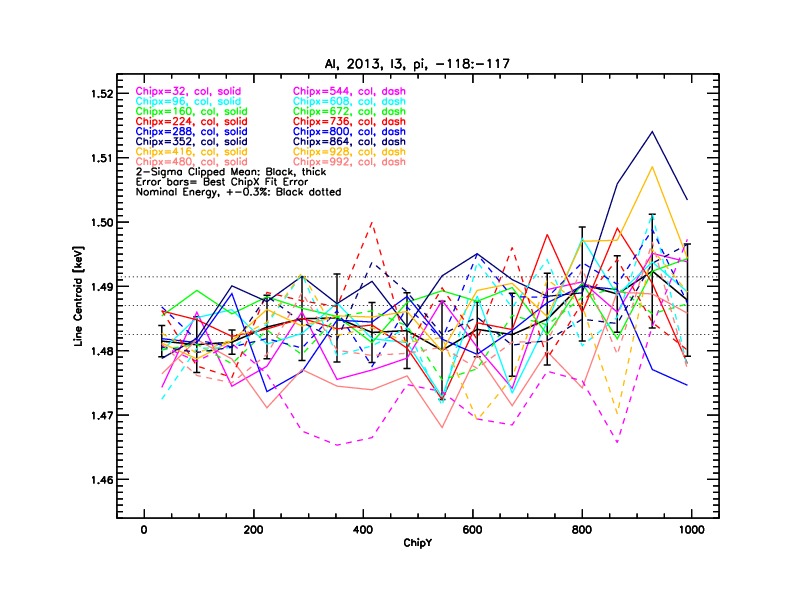 |
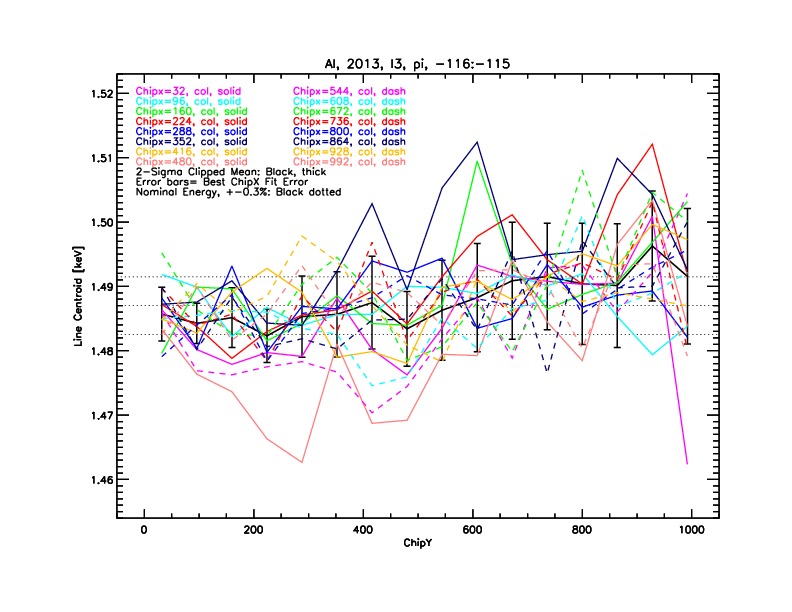 |
Mn-Ka (5.9 keV) |  |
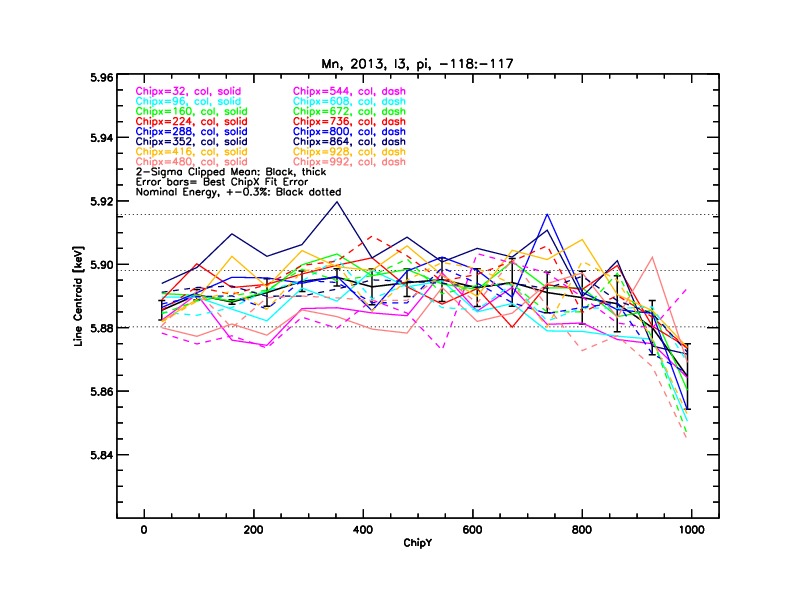 |
 |
|---|
| Line Energy | -119.5 | 117.5 | 115.5 | Al-Ka (1.49 keV) |  |
 |
 |
Mn-Ka (5.9 keV) | 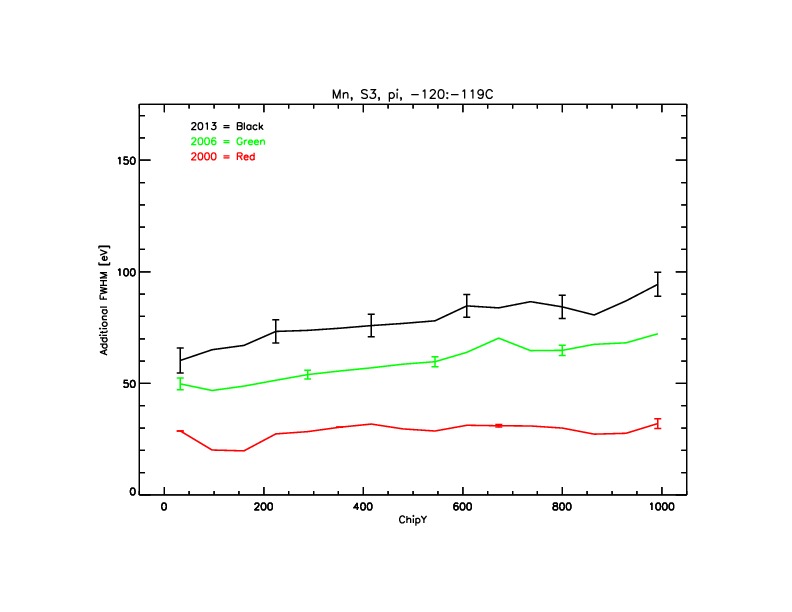 |
 |
 |
|---|
| Line Energy | -119.5 | 117.5 | 115.5 | Al-Ka (1.49 keV) | 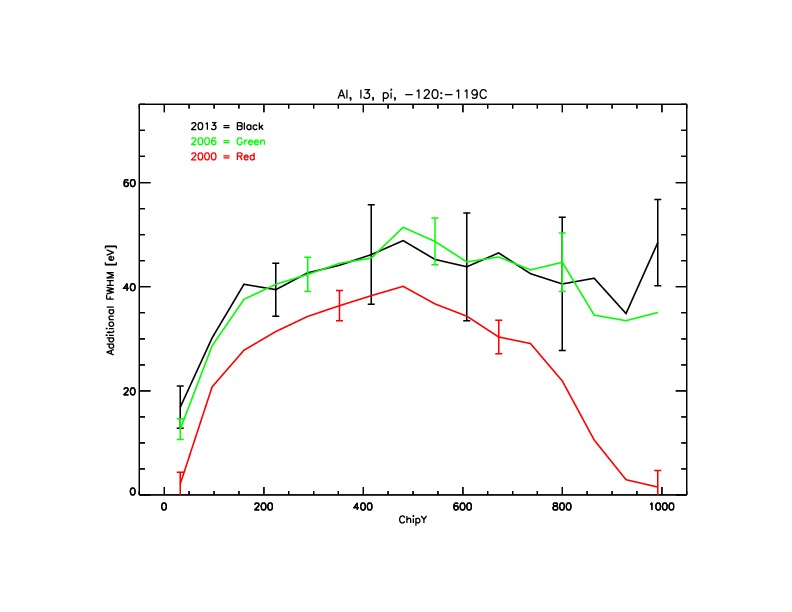 |
 |
 |
Mn-Ka (5.9 keV) |  |
 |
 |
|---|
ACIS Effective Area - Abell 1795
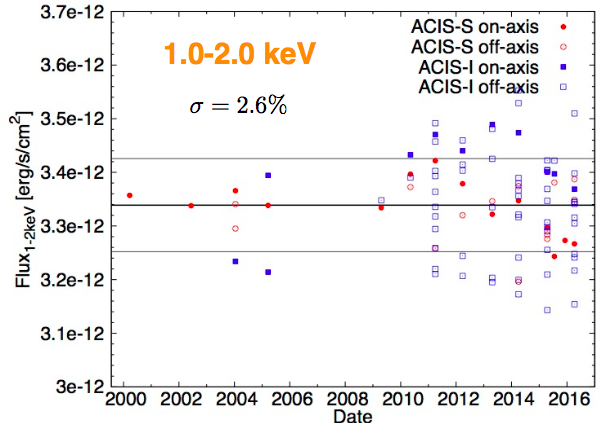 |
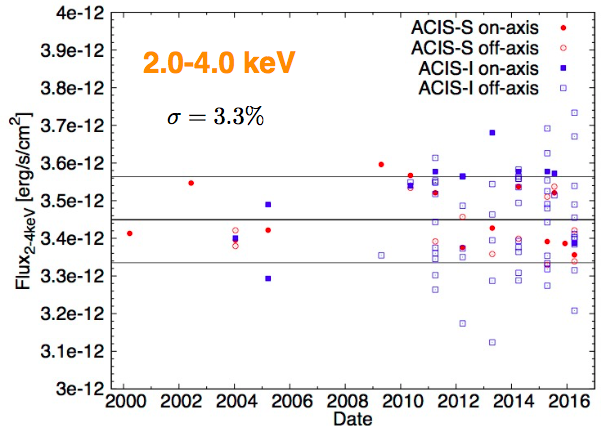 |
 |
 |
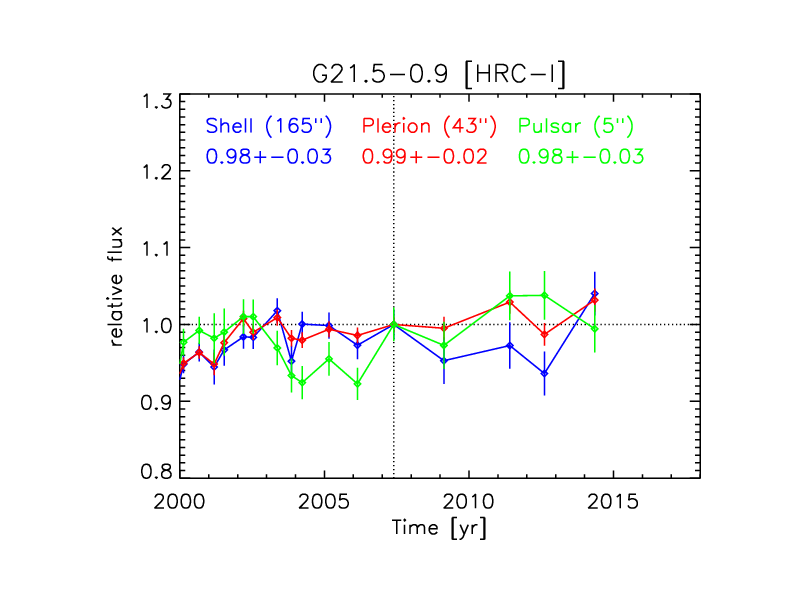 |
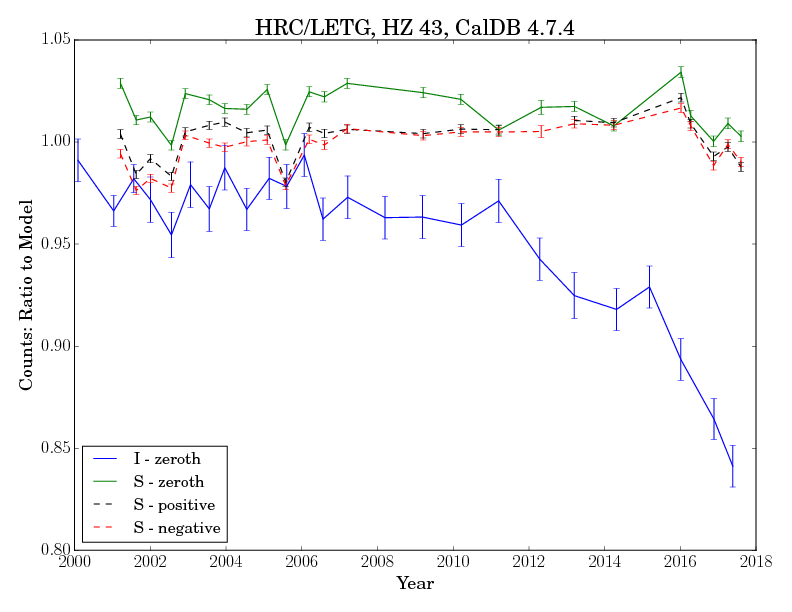 |
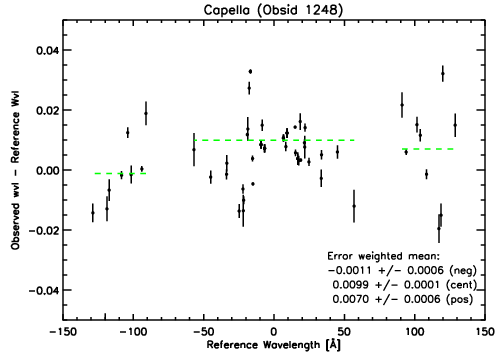 |
Interleaved Gratings Observations
 |
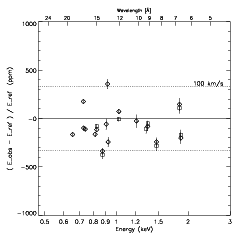 |